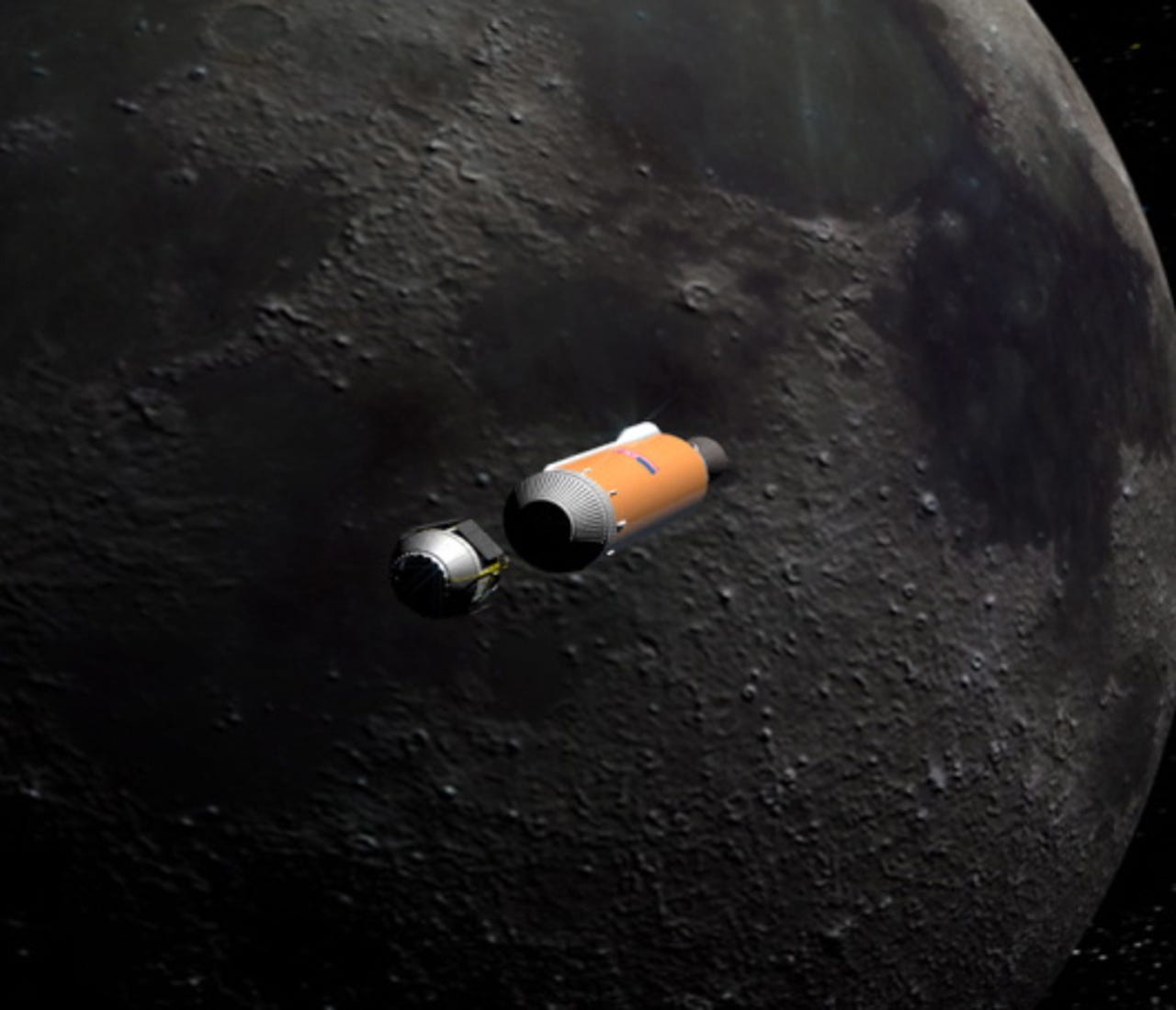Images: Lunar crash course; interplanetary visitors


Lunar Reconnaissance Orbiter
NASA announced plans to crash the Lunar Reconnaissance Orbiter into the moon, twice, in 2008. The primary mission of the $73 million, 2-ton probe, shown in this illustration, will be to search for water that could be used for manned missions.
Crash landing
When its studies are complete, the second stage will crash into the moon and be analyzed by other lunar orbiters and Earth-based oberservatories. The craft will also perform lunar mapping duties.
Venus probe
"Everything went as it was planned, clearly, without difficulties," said Gaele Winters, the European Space Agency's director of operations. "This is a great success."
Venus Express control
The Venus Express flight control team follows the orbit insertion manoeuvres in the main control room at ESA's Spacecraft Operations Centre in Darmstadt, Germany.
Spirit's last ride?
Spirit is still working. This photo shows where the right wheels of Spirit were grinding in the soil, prompting NASA to backtrack the rover and attempt another route.
Saturn spots
Meanwhile on Saturn: This image from the Cassini probe released Tuesday shows the horizontal cloud bands that rotate at different speeds across the giant planet. The vortices--counterparts to the east-west flowing streams--are prominent and can last for months or years.
Mars in hi-res color
The color is not as the human eye would see it, but was generated by combining data from green and near-infrared color bandpass detectors on the camera with black-and-white images (from red-bandpass detectors). The image also has been processed to enhance subtle color variations.
That the southern half of the scene is brighter and bluer than the northern half is perhaps due to early-morning fog in the atmosphere, NASA said. Large-scale streaks in the northern half are the result of wind on surface materials. The blankets of material ejected from the many small, fresh craters are generally brighter and redder than the surrounding surface, but a few are darker and less red. In the bottom half of the image is a redder color in the rough areas, where wind and sublimation of water or carbon dioxide ice have partially eroded patches of smooth-textured deposits. Click to see more photos from NASA's Mars Reconnaissance Orbiter.
Mars Odyssey
NASA celebrates the fifth year of the Mars Odyssey spacecraft which is still orbiting the Red Planet. The satellite not only is collecting scientific data, it also is serving as a communications relay between NASA's two Mars rovers and Earth. Here is a recent photo from Mars Odyssey.